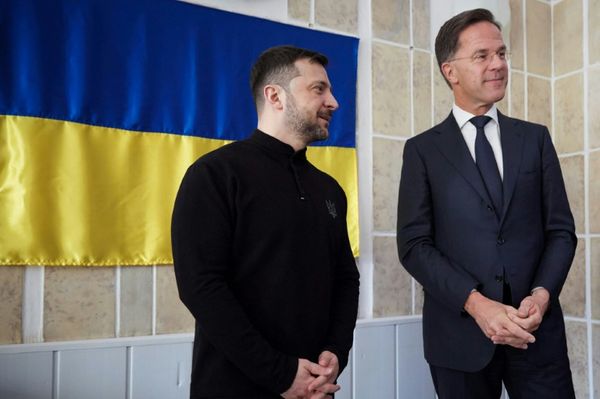
The ripples from the Juan Soto record contract continue to spread. With the cost of keeping outfielder Kyle Tucker soaring because of it, the Houston Astros must give more consideration to trading him before he enters his platform season heading into free agency. That market is heating up, with the Chicago Cubs and New York Yankees engaged in conversations with Houston.
Tucker turns 28 in January, making him three years older than when Soto entered his platform season. (Never discount Soto’s age in his value. The Pirates just gave up three pitchers for a platoon first baseman who is older than Soto in Spencer Horwitz, 27.) Tucker is not the hitter Soto is when it comes to plate discipline. But he is the better defender and runner and is growing into Soto-level power.
Like Adrian Gonzalez, Shawn Green and Tino Martinez, Tucker is a lefthanded hitter who’s adding power as he ages by learning to hit the ball in the air to the pull side. Check out his fly ball rates in the past four years:
He projects to be a steady 30–40 home run hitter and .550 slugger who strikes out below the major league rate and walks above it. Add in premier defense and the ability to steal 30 bases and you have a rare player. Over the past four seasons, for instance, Tucker is one of only four players to average 25 homers and 20 stolen bases. The others are Shohei Ohtani, Francisco Lindor and José Ramirez.
What is his free agent value? Start with this snapshot of player stats from 2021–24 as your guide:
It’s easy to imagine Tucker at a $35 million AAV over 10 years, given the rate of Soto inflation. Now imagine you are the Astros. You’re looking at trying to keep free agent third baseman Alex Bregman away from the Yankees, with money burning a hole in New York’s pocket, and you have Tucker and staff ace Framber Valdez entering their walk years. And from ages 27–30, Valdez (55–30, 3.08 ERA, 112 starts, 132 ERA+) is in Max Fried’s neighborhood (47–25, 2.87 ERA, 101 starts, 147 ERA+).
Tucker, Bregman and Valdez have $700-$800 million in value. No wonder this market can cause the Astros to pivot quickly while still fielding a contender.
The pressure was on Chicago White Sox general manager Chris Getz: trade a pitcher with No. 1 stuff but only two years of control as your first big move. It appears Getz has done well pulling it off.
The White Sox sent Garrett Crochet to the Boston Red Sox, as first reported by the Boston Globe and later confirmed by the club. The return is four prospects, including catcher Kyle Teel and outfielder Brandon Montgomery. Teel, drafted 14th overall in 2023, is good enough to play in the big leagues right now. Montgomery was the 12th overall draft pick this year. Twelve years of control for even just those two elite prospects is a terrific haul for a pitcher who has yet to throw 150 innings as a starter.
It's a good gamble for Boston, which needed a big addition to renew fan confidence after a few seasons of acting conservatively—like a second-tier franchise. Crochet has dominant stuff with a strikeout-to-walk rate of 6:1. He profiles as a Game 1 postseason starter.
To make this deal work, the Red Sox need Crochet to provide durability in the year after a huge innings jump, and they also need to extend him to get more than two years of service. The Red Sox did this with Chris Sale when they obtained him from the White Sox eight years ago. Sale had three years of control remaining at the time of the deal. Just before the third year, the Red Sox signed him to a five-year extension.
Wondering why the free agent market is so bullish? Here are your biggest reasons:
1. The big market teams are flush with money and incentive.
Entering Wednesday, MLB teams have spent $1.884 billion on free agents this winter. The New York Mets, Los Angeles Dodgers and Yankees have spent $1.276 billion of that. That’s three teams—all of whom played in the championship series last year—accounting for 67.3% of all free agent money spent.
Moreover, the next-tier big markets (Red Sox, Toronto Blue Jays, San Francisco Giants and Philadelphia Phillies) also are contenders with cash to spend. The top revenue teams are pulling further away from the pack.
2. Shohei Ohtani.
We are now seeing the echoes of his $700 million contract with the Dodgers. Ohtani pushed the record average annual value from Max Scherzer’s $44.3 million to $46.08 million in present day dollars, a 6.3% percent jump. Soto pushed it another 10.7% with his $51 million. The $700 million became a real milepost, even though it included a boatload of deferred money.
Before the bidding, insiders in the industry pegged Soto at between $600 million and $700 million because of the Ohtani deal. The minute Ohtani signed that deal, Scott Boras, the agent for Soto, was breaking it.
As one executive told me Sunday, “that is only because the Shohei deal has some anchoring effect there even though it was about $460m [in present day dollars].”
3. Steve Cohen
Don’t underestimate the purchasing power and fan-like thirst for a championship of someone worth $21 billion who follows his gut when he adds to an art collection worth more than $1 billion. The New York Mets owner was not going to be outbid for Soto. Period.
Cohen has a different idea of what value is than any other owner. But the Soto contract, however much of an outlier it is for a pure hitter without defensive and baserunning value, still has ripple effects on the rest of the market.
4. The supply of reliable starting pitching continues to decline.
Teams are paying for turning baseball into a bullpen-dominated game over the past decade or more. From 2011–23, starters who threw 162 innings dropped by more than half, from 93 to 44. We did see an uptick this season to 58, a post-pandemic high. But by using starters less often and for less length, the pitchers who can make (almost) 30 starts and throw 162 innings become even more rare and costly.
Thus, three years after Kevin Gausman got a $22 million AAV contract with an ERA+ of 147, Luis Severino got $22.3 million with a 101 ERA+. Two years after Chris Bassitt (42–20, 3.31 ERA over the previous three years) got $21 million per year at age 34, Nathan Eovaldi (41–25, 3.76 ERA) got $25 million per year heading into his age-35 season.
More MLB on Sports Illustrated
This article was originally published on www.si.com as Winter Meetings Notes: Kyle Tucker Is the Next Big Trade Candidate.







